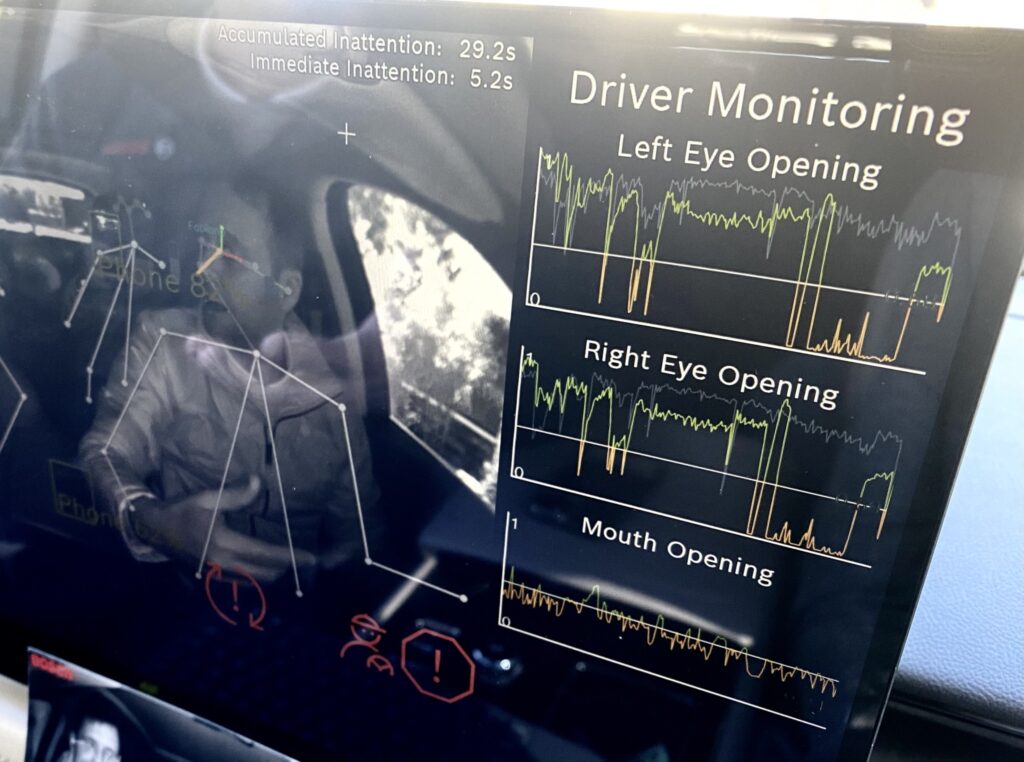Smart tech shows promise of smarter driver monitoring
Bosch wants to keep a closer eye on future drivers, and there are plenty of reasons to see why some people need careful monitoring. Look no further for cases of distracted, fatigued, or impaired driving for examples of that.
Various tools as diverse as in-cabin radar and cameras are coming together to make such tracking a reality.
Safety concerns present some of the most pressing needs. Europe is approaching deadlines to install driver monitoring systems (DMS) and driver drowsiness and attention warning (DDAW) functions in cars under the EU General Safety Regulation – the same rules that will require truck event data recorders.

U.S. regulators are also considering such tools under massive infrastructure funding rules, says John Nowinski, product area lead – interior sensing solutions, cross-domain computing solutions.
“It’s very seldom someone says, ‘Yeah, I was distracted,’” Nowinski says, referring to how difficult it is to track the true scope of the problems. “How do you measure the improvement if you don’t have that defined data?”
Measuring impairment with cameras
Cameras can measure eye movements, ‘gaze events’, and head movements to determine driver fitness, so researchers at the Bosche IoT lab in Switzerland are exploring how that can be used to identify impaired drivers. That’s still only part of the equation, of course. Regulators would need to decide what happens if such an issue is detected. Would the vehicle not start? Would it offer a warning or contact police?
It wouldn’t measure blood alcohol content, but might offer a way to identify those impaired in other ways.
“The eyes don’t lie. You can’t fake it,” Nowinski says.
As important as safety-related needs are, however, there are other benefits to be realized. A careful digital eye on what drivers look at, and how they hold themselves, can monitor factors like mood and behavior. Couple this with a focus on the Internet of Things, and the vehicle could offer to adjust in-cab temperatures. The simple direction of a gaze could tap into related information such as whether the business they’re looking at is open.
A coffee waiting at home
Pixels that capture a yawn might even trigger a suggestion for a cup of coffee … or start a networked coffee maker at home so a freshly brewed cup will be waiting when the driver arrives.
The latter sounds like science fiction, perhaps fodder for the Jetsons, but Bosch demonstrated the capability during the annual CES event in Las Vegas, as part of a partnership with Amazon Web Services.
Another emerging technology uses radar to identify whether a child has been left behind in the car – something that leads to about 30 heat stroke deaths in the U.S. each year.
Nowinski also stressed factors to address privacy-related concerns. The cameras don’t track video as much as the datapoints and wireframes that identify things like eye positions, whether someone is holding a phone, or whether eyes are closed.
“It’s not video. We’re taking frame by frame, we’re taking the data and using that for the algorithms,” he said. There are practical considerations behind this approach, too. “Video is a huge memory hog.”
Perhaps there’s another reason why drivers should accept the broader use of such lenses.
“Cameras,” Nowinski said, “are everywhere.”
Have your say
This is a moderated forum. Comments will no longer be published unless they are accompanied by a first and last name and a verifiable email address. (Today's Trucking will not publish or share the email address.) Profane language and content deemed to be libelous, racist, or threatening in nature will not be published under any circumstances.